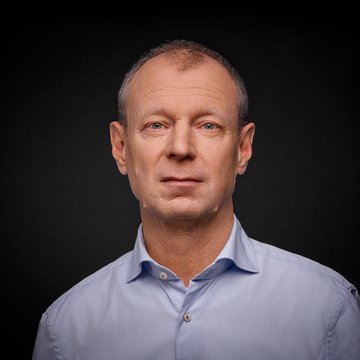The very first LC catalog from 1983 shows the basic structure of IR detectors that is still valid today: The focus is on single detectors; both thermal and semiconductor detectors are available.
Detectors Just How You Like Them!
We maintain the best contact to our manufacturing partners and are particularly proud of the relationships we have cultivated since the foundation of the company. Based on sophisticated standard products, we are also able to offer customer-specific solutions. The ideal technology for your application is selected and then the appropriate partner found. But have a look for yourself first!
Thermopiles – Dexter Research Center
Bob Toth’s innovation – depositing the materials that have been preferred for thermopiles since Goethe’s time (bismuth and antimony) in an overlapping manner – led to the founding of the Dexter Research Center in 1977. Together with the corresponding substrate materials and black absorbing layers, the classic M1 and M2 miniature thermopiles (still produced today as they were back then) were developed. These detectors were cheaper and more robust than the prior art of the time and made commercial use possible. The guaranteed D* value of 1.9x108 with an argon filling and 4.5x108 in the highly-sensitive but slower version with a xenon filling is still a milestone. Today, the DRC is managed by Rob Toth, the founder’s son. The current innovative focus is high-quality digital thermopiles with integrated ASIC.
Pyroelectric Detectors – InfraTec GmbH
In the early ‘90s, a cooperation with InfraTec from Dresden developed. InfraTec was founded in 1991 and focused meticulously on the optimization of detectors with LiTaO3 as a proven basic pyroelectric material. The chip noise, black absorbing layer, resistors, and JFETs were all optimized. Automated measurement technology was introduced step by step. With this technology, guaranteed D* values of up to 4x108 in a standard detector and 4.9x108 in a high-end detector were achieved. In a second step, this platform led to the development of sensor families for certain applications. Multicolor detectors in a planar configuration or featuring an integrated beam splitter as well as single and dual detectors that have integrated optical amplifiers and/or discrete electrical preamplifiers were developed. Later, miniaturization, the reduction in microphony, and as soon as the time was right the integration of low-loss operational amplifiers were added.
One current research focus is the next generation of detectors with a tunable filter. These detectors will enter the market step by step starting in 2013 and be developed into a family of microspectrometers.
Semiconductor Detectors – Teledyne Judson
The first LC complete catalog listed IR semiconductor detectors from Judson. The focus here was on Ge photodiodes. In addition, InSb photodiodes, InAs photodiodes, and HgCdTe photoresistors were available. In the ‘90s InGaAs and extended InGaAs photodiodes gained increasing importance due to their low noise properties.
In those years, Dragan Grubisic (now of LASER COMPONENTS DG) headed an R&D team from Judson that pioneered research in the field of NIR detectors for measurement technology and created a range of products with sensitivities of up to 2.6 µm. It was this long-wave version in particular that was first responsible for the rapid growth of FT NIR devices. In the past few years, HgCdTe photoresistors have been increasingly replaced by HgCdTe photodiodes.
PbS/PbSe Photoresistors – CAL Sensors
CAL Sensors was founded in Santa Rosa, California, in 1986 by a group of three to manufacture PbS and PbSe photoresistors. Bob McLean, an “infrared institution,” was one of the CAL founders. In the ‘50s, he developed a fundamental patent on PbSe detector technology together with colleagues.
The original PbS detectors, which are sensitive between 1 and 3.3 µm, have a good cost-performance ratio and are favored when large sensitive areas are required.
PbSe has a large detection range between 1 and 5 µm and performs best at room temperature.
CAL is currently working on more complex detector designs. In more concrete terms, they are working on multicolor detectors in planar configuration and on the third generation of self-scanning arrays – both in PbS and PbSe technology.
Avalanche Photodiodes
LASER COMPONENTS Detector Group
Last but not least: InGaAs APDs have been part of LC’s product range since the early ‘90s.
These detectors are meanwhile being manufactured by LASER COMPONENTS DG in Tempe, Arizona, which is headed by Dragan Grubisic. LCDG’s main task is the development and production of APDs – from the UV to the NIR, based on Si and InGaAs. The advantage of being located in the semiconductor center of Tempe, Arizona, is being used to work on improving NIR photodiodes.


